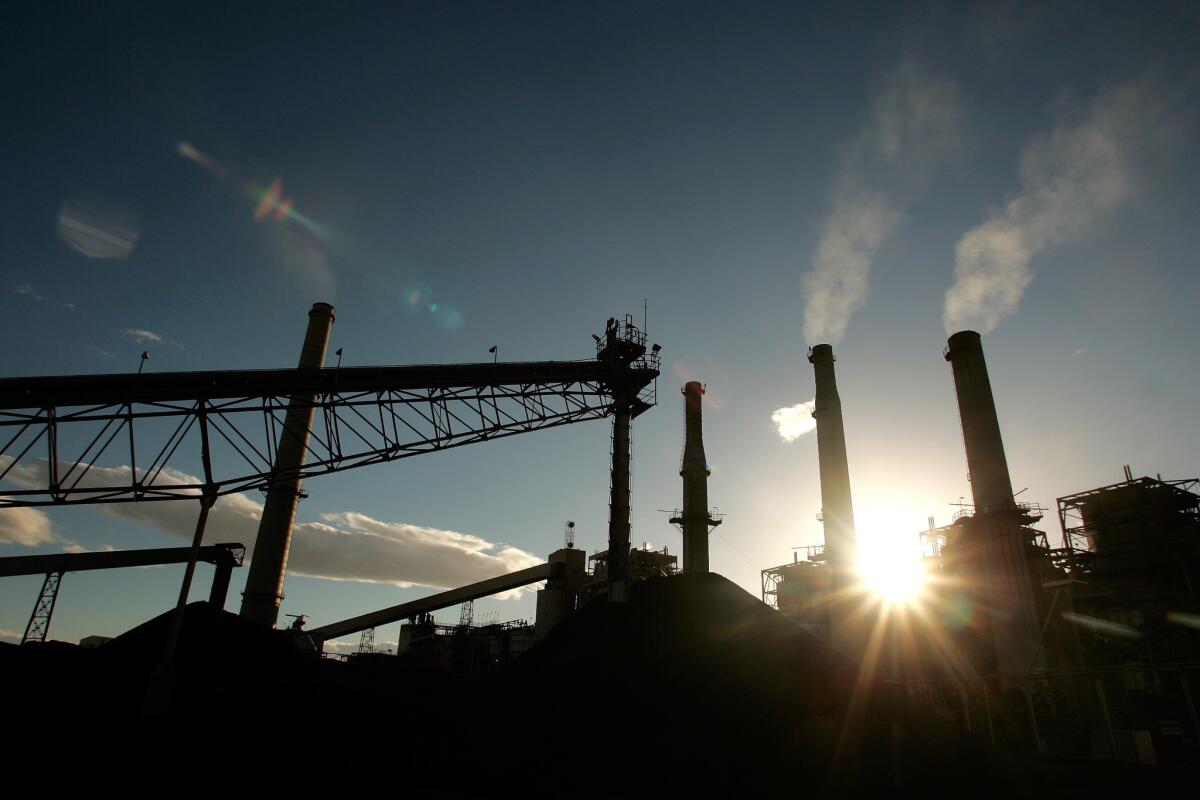Obama administration limits on soot pollution upheld by appeals court

- Share via
The Obama administration on Friday scored its third major legal victory on air pollution in less than month when a federal appeals court rejected an industry challenge to its latest health standards for fine particulate matter, or soot.
The unanimous ruling by a three-judge panel of the the U.S. Court of Appeals for the District of Columbia Circuit found the U.S. Environmental Protection Agency was within its discretion in 2012 when it tightened limits on lung-damaging soot.
The National Assn. of Manufacturers filed a legal challenge to the regulations last year, saying the agency had overreached and would crush businesses’ plans for growth.
The 11-page decision rejected industry complaints and found that the EPA had acted reasonably and within its bounds when it adopted stricter nationwide standards for fine particulate matter. The tiny, chemical-laden particles and liquid droplets are emitted by power plants, diesel trucks, refineries and factories. They lodge deep in the lungs when inhaled and are linked to heart and lung disease, respiratory illnesses and premature deaths.
The EPA issued a statement calling the decision “a resounding victory for public health and a key component of EPA and State efforts to ensure all Americans have clean air to breathe.”
Based on scientific studies, the EPA tightened annual limits on fine particle pollution from 15 micrograms per cubic meter to 12 micrograms per cubic meter and set new requirements for dozens of major cities to install air quality monitors to test for the pollutants near busy roadways.
The ruling is the Obama administration’s third favorable court decision on its air quality regulations since mid-April.
Last week the U.S. Supreme Court upheld an Obama administration regulation that requires states with coal-fired power plants to cut air pollution that drifts across Midwest and East Coast states. Two weeks earlier, the U.S. Court of Appeals for the District of Columbia Circuit upheld the EPA’s limits on emissions of mercury and other air toxics.
Environmental groups and legal experts said the streak of favorable rulings bode well for the agency as it moves closer to proposing new climate change regulations to limit greenhouse gas emissions from existing power plants.
“The three rulings together create quite the trifecta by significantly furthering the administration’s agenda on addressing climate change through the existing Clean Air Act,” said Richard Lazarus, an environmental law professor at Harvard Law School.
The fine particle air quality standard, Lazarus said, “is one of EPA’s most important, because so many major stationary sources as well as motor vehicles are subject to it, particularly power plants. The regulation at issue amounts to a significant tightening of the standard, with major public health and public welfare implications.”
John Walke, clean air director for the Natural Resources Defense Council, which intervened in the case to defend the EPA’s soot standards, said the Obama administration is building a strong record of air pollution rules that will stand up to legal scrutiny.
“In all of these cases the courts have found that EPA acted reasonably, consistent with the science and the law,” Walke said, noting that the decision marks the fifth time industry groups have lost legal challenges to Obama administration air quality standards for air pollution, including ozone, lead, acid rain-generating sulfur dioxide and smog-forming nitrogen oxides.
The National Assn. of Manufacturers said it was reviewing the decision and considering future options.
“We’re disappointed in today’s ruling that only further adds to the thousands of regulations facing manufacturers,” Linda Kelly, the association’s senior vice president and general counsel, said in a statement. “The court’s decision also underscores the difficulty manufacturers face in pushing back against a powerful and often overreaching EPA.”
The EPA estimates that meeting the latest soot standards will cost $53 million to $350 million and provide $4 billion to $9.1 billion a year in health benefits, including reductions in premature deaths, heart attacks and emergency department visits.







